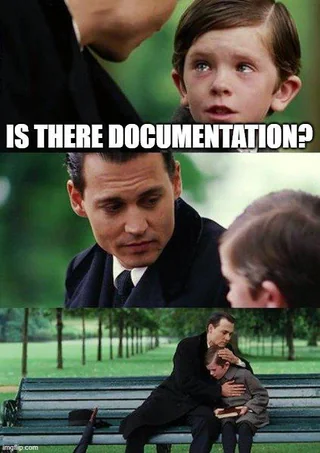How to Make an Effective Management System?
Let’s face it, “management system” isn’t the sexiest phrase in the business dictionary. It sounds like something involving spreadsheets, dusty manuals, and someone in a tie telling you what you already know. But done right? An effective management system can be your company’s secret weapon, the thing that turns big goals into real results, and chaotic teams into aligned, focused powerhouses.
Honestly, we’ve built, broken, rebuilt, and fine-tuned our fair share of systems. And if there’s one thing we’ve learned, it’s this: an effective management system isn’t a tool, it’s an ecosystem. It doesn’t live in a folder; it lives in how people make decisions, collaborate, and improve over time.
So now, we’ll walk you through what a management system really is, what principles make it work, and how to build one that’s not just compliant, but actually useful. We'll also get into best practices, common pitfalls (yes, we’ve hit a few walls ourselves), and how to keep your system evolving instead of gathering dust.
Whether you're starting from scratch or trying to fix a system that's more “Frankenstein” than “framework”, we’ve got you covered.
Let’s take a deeper look at management systems: what is it?
Starting with the basics: what exactly is a management system?
Well, in simple terms, it’s how an organization structures its processes, responsibilities, and resources to achieve its objectives. It’s like the brain behind the operation, but instead of neurons, you’ve got policies, metrics, workflows, and (hopefully) fewer headaches.
There’s no one-size-fits-all system either. Depending on what you're trying to manage, you might find yourself working with a **Quality Management System (QMS)** to keep standards high, an **Environmental Management System (EMS)** to minimize ecological footprint, or even a **Safety Management System (SMS)** if keeping people out of harm's way is your top priority. And that’s just scratching the surface, there are systems for risk, compliance, information security… the list goes on.
So, why bother implementing one? A well-oiled management system brings consistency, accountability, and transparency to your operations. It helps you align daily actions with strategic goals, improve decision-making, and scale processes without scaling chaos.
What makes a management system truly work
Now that we know what a management system is, let’s talk about what makes it actually effective. Spoiler: it’s not just about having fancy documentation or ticking boxes for ISO audits.
An effective management system is deeply connected to the way your business breathes, thinks, and acts.
1️⃣ First things first: strategic alignment. Your management system must reflect your company’s goals - not become a disconnected bureaucratic labyrinth. In the context of software, patterns like Domain-Driven Design (DDD) or CQRS can help structure digital systems around core business logic. But when we talk about management systems at an organizational level, alignment is better achieved through strategic frameworks like the Balanced Scorecard, Hoshin Kanri, or OKRs. If it doesn’t bring you closer to your vision, it’s just noise.
2️⃣ Next up: standardization. It might not sound sexy, but having clear, documented processes saves teams from reinventing the wheel (and from arguing over whether it’s round or hexagonal). Standards reduce chaos, improve quality, and set a baseline for improvement.
3️⃣ Speaking of improvement, continuous improvement is practically compulsory. Enter the good old PDCA cycle: Plan, Do, Check, Act. It’s the rinse-and-repeat method behind high-performing organizations. Through small iterations, ongoing feedback, and measurable outcomes, teams can fine-tune both their processes and their culture. In digital product environments, improvement might also extend to how we structure software systems, but let’s not confuse that with management principles. Tools like Kaizen or Lean thinking are more aligned with organizational improvement at scale.
4️⃣ But even the best-designed system won’t fly without people. Employee engagement is key. In fact, according to Gallup’s 2024 State of the Global Workplace report, only 23% of employees worldwide are actively engaged at work, a sobering reminder of how much untapped potential is out there. Remember that your team isn’t just there to follow rules, they’re the eyes, ears, and hands of your operations. Involve them, listen to them, and empower them to improve the system with you.
5️⃣ And finally: performance measurement. You can't manage what you don't measure, right? KPIs and OKRs help you track if you're on the right path, and give you the data you need to adjust course when reality doesn't match the plan (which, unsurprisingly for us, is nearly always the case).

Develop a successful management system, step by step
So, how do you actually build an effective management system? No magic wands here, just a solid process. Here’s how we usually tackle it:
🔸 Step 1: assess organizational needs. Before designing anything, take a step back and understand what your organization actually needs. Are you aiming for better quality? More speed? Regulatory compliance? Aligning the system with your goals, and your culture, is the foundation.
🔸 Step 2: design the system. As we like to say, this is where the architecture comes in. Define clear policies, outline responsibilities, and create processes that are structured but flexible enough to adapt. From a different perspective, think of it as designing a house: you need solid walls, but also doors that open.
🔸 Step 3: implement the system. Time to put theory into practice. Roll out your processes, tools, and training in a way that gets buy-in rather than eye-rolls 🙄. Don’t just dump a manual on everyone’s desk, make it real, make it usable, and lead by example.
🔸 Step 4: monitor and review. Systems aren’t “set and forget”. Track how it's performing, gather feedback, and run periodic reviews. It's not about catching people out, it’s about learning what’s working and what’s not.
🔸 Step 5: continuous improvement. Yep, this again. Use what you’ve learned from monitoring to tweak and refine. A system that doesn’t evolve is a system that dies slowly (and painfully).
Which are the best practices to build an effective management system
You’ve got your system designed, great. But implementation? That’s where the rubber meets the road (and where many systems skid off it). Here are a few best practices we swear by when making a management system actually work in the real world:
🪙 Leadership commitment is non-negotiable. If your C-levels aren’t genuinely behind the system, no one else will be either. People notice whether management walks the talk or just sends “we support this initiative” emails while ignoring it in meetings.
🪙 Clear communication across all levels is essential. Everyone, from interns to execs, should know why the system exists, what it aims to do, and how they fit into it. We can say that, if it feels like a mystery, it’s not going to stick.
🪙 Training and development isn’t just a box to tick, it’s the bridge between strategy and execution. Give your team the skills they need to actually use the system. And please, go beyond PowerPoint slides. Think workshops, simulations, even pairing if it helps make it real.
🪙 Resource allocation is another big one. A management system without proper tools, time, and people behind it is like trying to build IKEA furniture without the screws 🔩. Don’t skimp here, investing upfront saves a world of rework later.
🪙 Finally, documentation. Yes, we said the D-word. But hear us out, clear, accessible, and well-structured documentation is what turns unshared insights into a collective resource. Keep it lean, keep it updated, and most importantly, make sure people actually use it.

Common challenges and how to overcome them
Let’s be real here: no matter how well you design your management system, reality has a way of throwing curveballs. Here are the usual suspects that threaten to derail even the best-laid plans, and how we’ve learned (sometimes the hard way) to handle them:
🛑 Resistance to change is probably the biggest blocker. People get comfortable with how things are, even if "how things are" is a mess. The key is to involve them early, explain the why, and show quick wins. Don’t just impose change, co-create it.
🛑 Lack of engagement can turn your system into background noise. If people don’t feel ownership, they won’t care. So bring them in. Ask for input, celebrate feedback, and give teams a voice in how the system evolves. Engagement is built, not demanded.
🛑 Insufficient resources, yep, the classic. Whether it's time, budget, or people, resource limitations are real. The important thing here is the prioritization: focus on high-impact areas first, leverage existing tools smartly, and don’t be afraid to say no to what doesn’t add value (even if it looks shiny ✨).
🛑 Inadequate monitoring can let issues fester until they become full-blown problems. Set up simple but meaningful systems. Think dashboards, check-ins, and regular retrospectives. It's not about micromanaging, it’s about staying in tune with how the system’s actually performing.
At Acid Tango, we all know (and we say that, from personal experience) that no system is perfect, and that’s okay. The real goal isn’t to avoid all challenges, it’s to be ready for them when they show up.
Now you know how to make your system effective, stick and thrive
So, let’s wrap it up. A truly effective management system it’s about creating a framework that helps your organization think clearly, act consistently, and improve continuously.
We’ve covered the essentials: understanding what a management system is, grounding it in solid principles like strategic alignment and continuous improvement, building it step-by-step with purpose, and implementing it with leadership, communication, and the right resources. We’ve also looked at the typical pitfalls, because let’s be honest, they will happen, and how to face them head-on.
What we’re trying to say is that everything is about building one that actually works for you. One that grows with your team, adapts to change, and helps you deliver real value. At Acid Tango, we’ve seen firsthand how a well-crafted system can transform chaos into clarity (although, sometimes we do love a little chaos), but no, by this point you should know that you don't need to be a superpower and multinational giant to get it right.
Turn your favorite chaos into a system that actually works, an effective management system.
